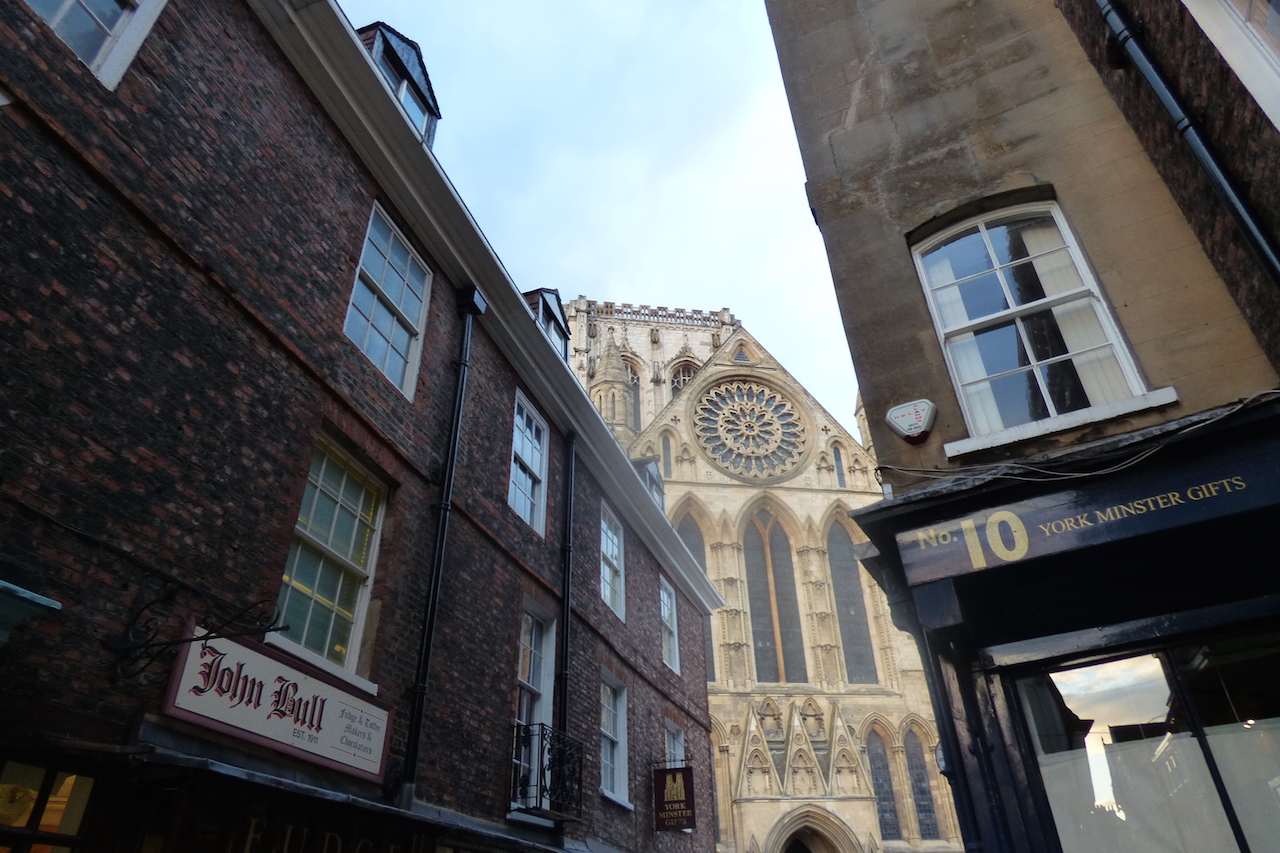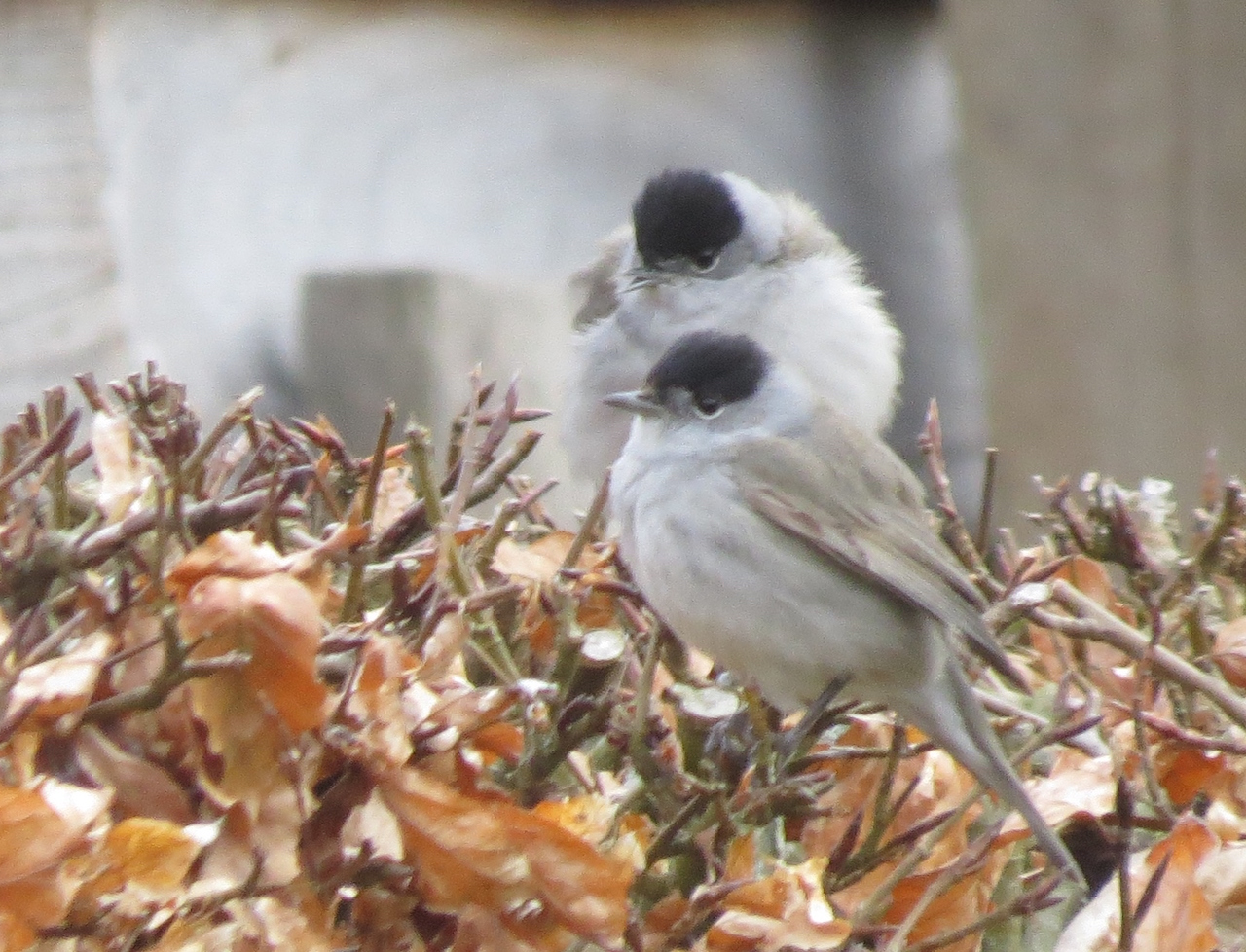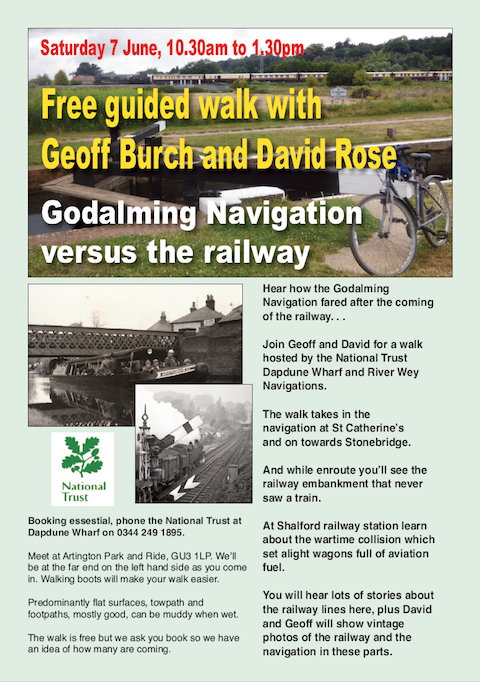 Abraham Lincoln
If given the truth, the people can be depended upon to meet any national crisis...
Abraham Lincoln
If given the truth, the people can be depended upon to meet any national crisis...
 Guildford news...
for Guildford people, brought to you by Guildford reporters - Guildford's own news service
Guildford news...
for Guildford people, brought to you by Guildford reporters - Guildford's own news service
Birdwatcher’s Diary No.104
Published on: 15 Mar, 2016
Updated on: 15 Mar, 2016
By Malcolm Fincham
Over the last few days of February I was put under a temporary birdwatching curfew.
Booked up to visit my daughter now living in York, my wife insisted under no circumstances would it be a birdwatching trip. However, insisting I took my cameras (and binoculars) just in case of some scenic shots, we ventured north up the M1.

York Minster suddenly appears before me like a giant monolithic edifice. Click on images to enlarge in a new window.
Taking the opportunity of some sightseeing while there, I decided to visit York Minster. Standing like a towering edifice, to my eyes, monolithic in its structure, it suddenly appeared towering over me as I turned a corner out of the city centre, looking as if it had been carved out of one solid block of stone.
With its stained glass and stone it can certainly be classified as one of UK’s masterpieces with its foundations rooted in the nation’s earliest history.
The remarkable York Minster is the largest medieval cathedral in all of Northern Europe.
Having once looked in awe during my youth at our Guildford cathedral, I must admit I felt a little cheated comparing the minster’s magnificence.
For me it was the view seen from the north side of the building that was taking my interest the most. High up on the north face of the building was what I had been looking for.
An adult male peregrine, perched in one of its favoured spots, sitting on a stone grotesque by a stained glass window arch of the north west bell tower. Click on link to video clip that includes sounds of minster bells! https://www.youtube.com/watch?
Another female, (out hunting during the period of time I was there) had apparently chased off the female that had been unsuccessful in raising last year’s young and had now taken up with this handsome ‘tercel’.
Being accustomed to getting up early, I also managed to sneak out on a few occasions before the rest of the family had surfaced.
This time of the year is always the best time for me to see and hear bullfinches. With many preoccupied with feeding on spring buds and blossom from trees about to come into leaf. And with no leaves on the trees to hide behind, there is more than just a chance of seeing perhaps a white rump as they fly away.
It is often awkward for me to tell whether bullfinches have started pairing up for springtime romance, as they are one of only a few birds that seem to spend time together all year round.
The males and females are quite contrasting in colour but rarely seen far apart. Once persecuted for stealing blossom from our fruit barring trees, especially from apple orchards, they seem to be a little better tolerated these days.
For reasons unknown to me, the ones I sighted in the outskirts of York were almost tame in their nature compared to our local ones, allowing me some good close up views and photos as well as a short video clip as they fed on some blossom. https://www.youtube.com/watch?
Back in Guildford, I visited Bob, a long time friend and birdwatching enthusiast, who lives in Wood Street Village. It gave me a chance to catch up with some photographic opportunities. Keen on setting feeding stations and bird boxes around, he has been able to attract a wealth of wildlife into his garden.
I was delighted to see eight or more yellowhammers feeding on seed, that had been put out on his lawn.
Joined for a while by a stock dove feeding on the seed.
While an assortment of finches fed on feeders, the occasional visit from a ring-necked parakeet added to the delights.
He had also seen and taken photos of two male blackcaps just a few days before.
And inevitably, with all the bird activity around, there was a regular visit from one of the local sparrowhawks.
He also managed, to my envy, a few days after my visit, to get another photo of a red kite while it perched in a tree at the foot of his garden.
While there it also gave me the opportunity to visit Wood Street Village pond where I was intrigued by a comment by one of my readers who mentioned some bottle-green ducks that she had sighted there.
Having taken a few photos, I checked up on their origin and found that they are very similar to the Cayuga duck that can apparently be seen on Broadwater Lake near Godalming.
The Cayuga name is taken from Cayuga Lake, one of the lakes in the Finger Lakes region of New York State, where the breed was popularised.
At Stoke Lake a pair of kingfishers continued to be seen, often just as a fleeting glimpse as they flew low across the water. And although not being as fortunate as I was in my last report of getting picture of the two together, I did manage a few shots of one as it perched by the lake.
On the lake the pair of great-crested grebes were now starting to come into summer plumage, spending much of their time together.
Long-tailed tits continue to be a common sight around the reserve, now starting to look for possible places to nest.
While grey wagtails can often be seen together along the river, now paired up ready for spring.
A pair of red kites made an appearance on one occasion, flying high together over the lake.
Across the river a pair of stonechats could be seen.
While among the hedgerows I continued to see chiffchaffs.
Treecreepers continued to be seen feeding on insects in the crevices of trees.
Goldcrests also flitted about among the hawthorn.
Having seen more than my fair share of firecrests this winter, sighted at least three in the Rydes Hill area, as well as one on my travels around Wonersh. There seems to have been a large influx of them locally this winter.
I was especially delighted when I managed to stumble across one by Stoke Lake.
And although being a challenge to photo, I even managed a few more shots for my collection.
Recent Articles
- Conservative Claims on Use of CIL Payments ‘Political Theatre’ Say Lib Dems
- Thames Water Faces £122 Million Penalty Following Ofwat Inquiry
- New Knife Crime Strategy for Surrey Announced
- Public Asked for Views on SCC’s Proposal for Reduced Speed Limits
- Guildford Healthcare Staff Celebrated for Transformative Mental Health Support
- Will the Government Help Save Community Pubs? Asks Surrey MP
- A Lighthouse in the Centre of Town Showing the Way to Community
- Letter: SCC Directs Weedkilling Policy
- Library Gets Lottery Grant To Raise Awareness of Green Issues
- Story of Wartime Canadian Army Entertainment Unit Based at Down Place, Guildford


Search in Site
Media Gallery
Dragon Interview: Local Artist Leaves Her Mark At One of England’s Most Historic Buildings
January 21, 2023 / No Comment / Read MoreDragon Interview: Lib Dem Planning Chair: ‘Current Policy Doesn’t Work for Local People’
January 19, 2023 / No Comment / Read MoreA3 Tunnel in Guildford ‘Necessary’ for New Homes, Says Guildford’s MP
January 10, 2023 / No Comment / Read More‘Madness’ for London Road Scheme to Go Ahead Against ‘Huge Opposition’, Says SCC Leader
January 6, 2023 / No Comment / Read MoreCouncillor’s Son Starts Campaign for More Consultation on North Street Plan
December 30, 2022 / No Comment / Read MoreCounty Council Climbs Down Over London Road Works – Further ‘Engagement’ Period Announced
December 14, 2022 / No Comment / Read MoreDragon Interview: GBC Reaction to the Government’s Expected Decision to Relax Housing Targets
December 7, 2022 / No Comment / Read MoreHow Can Our Town Centre Businesses Recover? Watch the Shop Front Debate
May 18, 2020 / No Comment / Read More





































Recent Comments